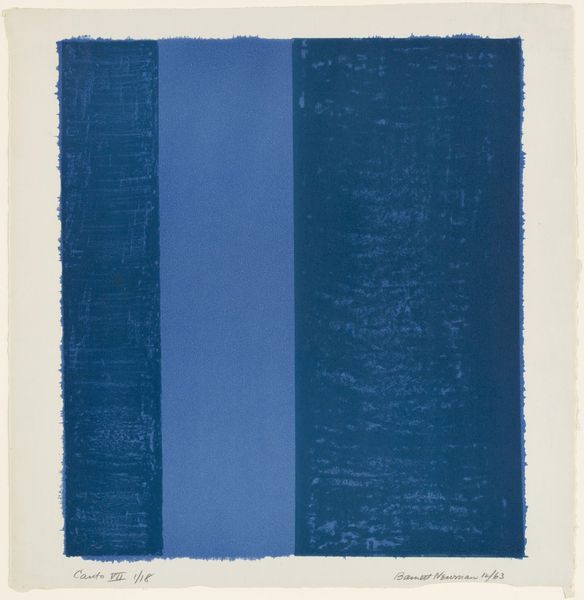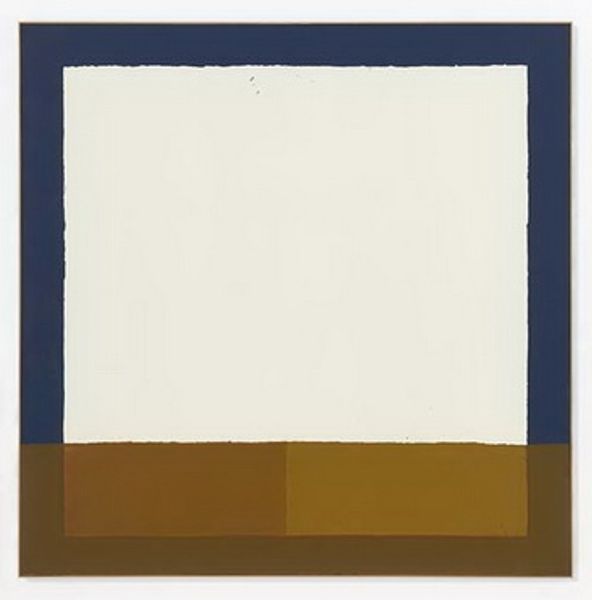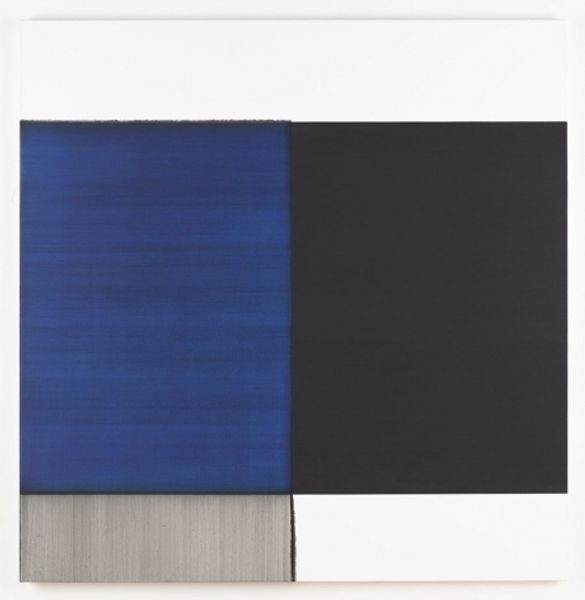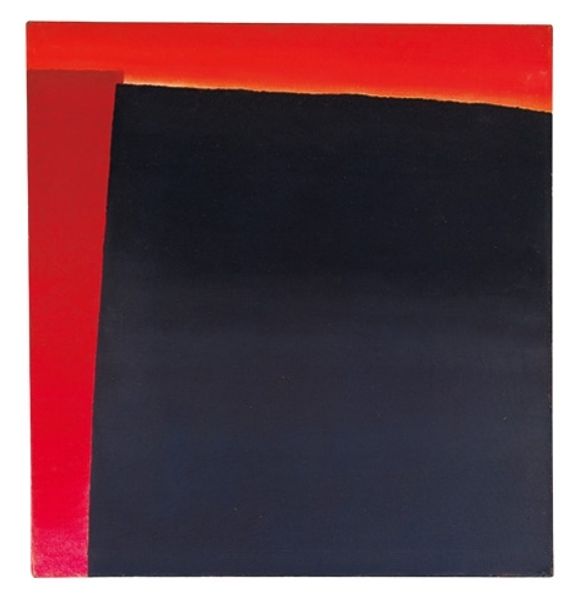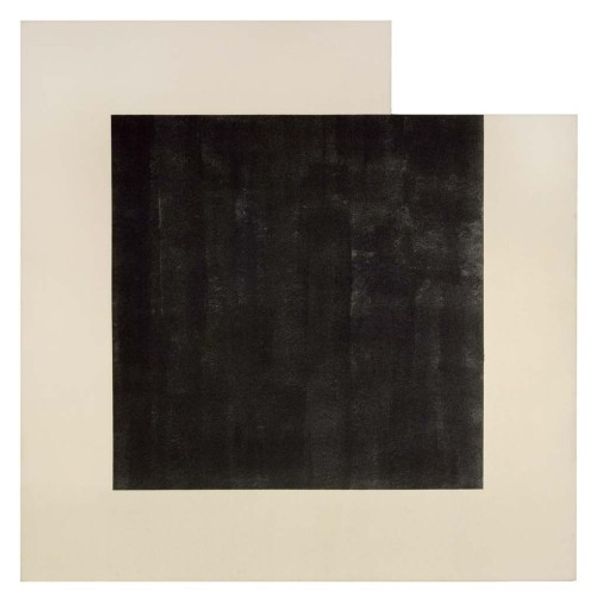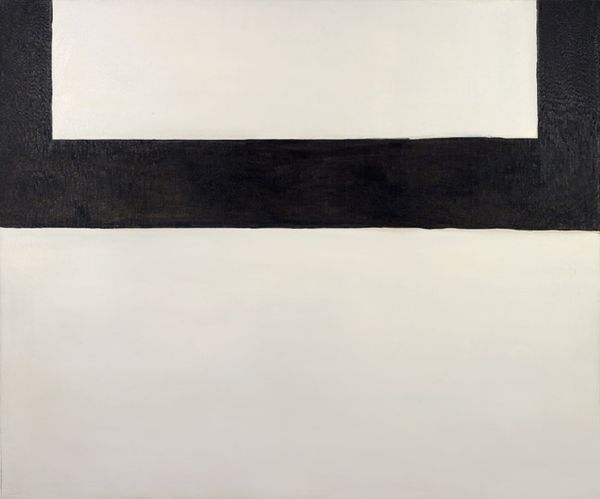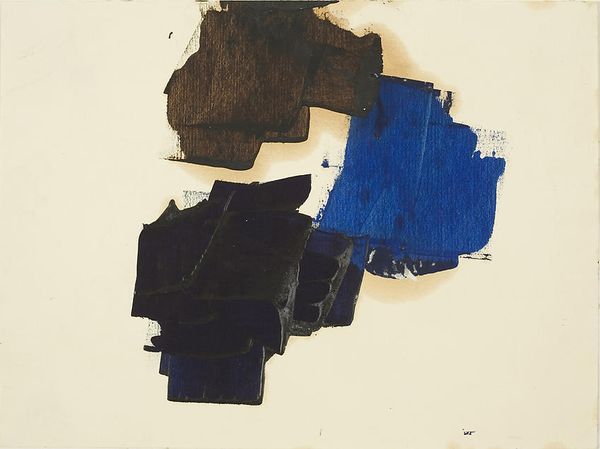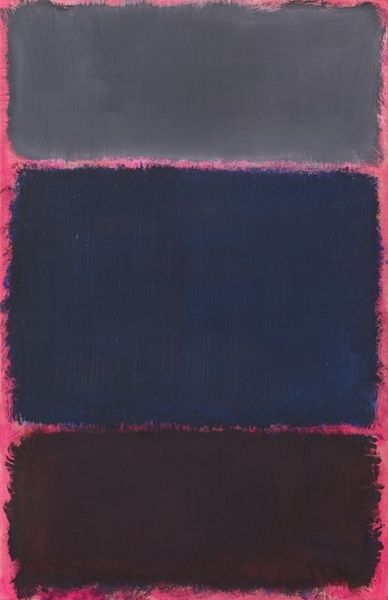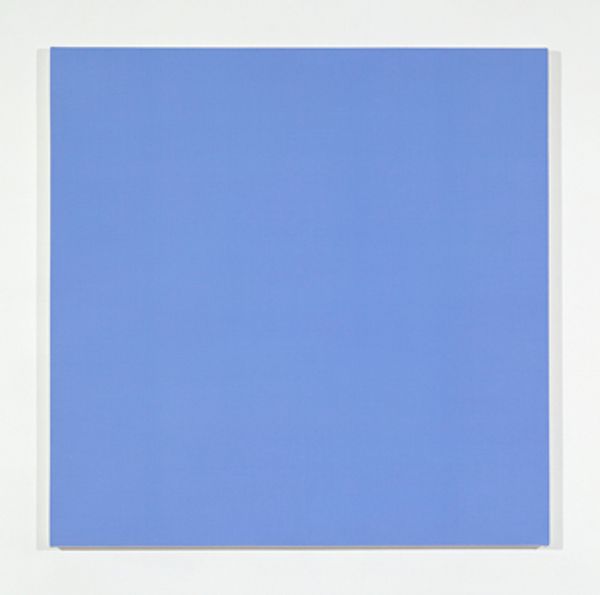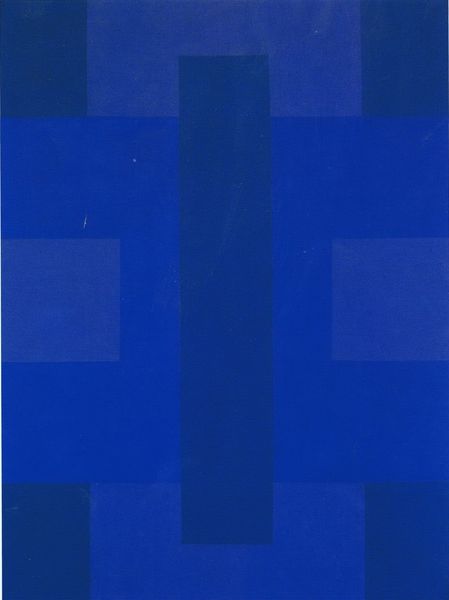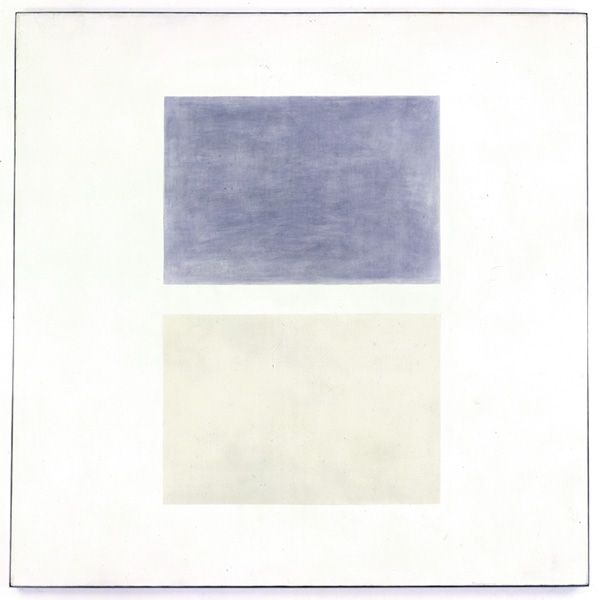
print, acrylic-paint
#
abstract-expressionism
# print
#
acrylic-paint
#
form
#
geometric
#
abstraction
#
line
#
modernism
Copyright: Barnett Newman,Fair Use
Curator: What strikes you first about this work, Barnett Newman's "Canto IX" from 1963? It’s an acrylic print, a seemingly simple composition of blue and black. Editor: The immediacy is what grabs me. It feels... confrontational, in a strangely quiet way. Like a statement, or even a protest, distilled to pure form. The stark juxtaposition of the colors, that solid vertical black bar against the blue expanse… it creates a very potent tension. Curator: Indeed. Knowing Newman, who championed abstract expressionism, this wasn't merely about aesthetics, but about a complete reimagining of artistic production and value. These bold choices reflect his dedication to elemental form and process. The canvas itself isn't disguised, but rather embraced as a component of the piece. Consider also, it’s a print, so the process of replication is part of its creation and thus of its value and message. Editor: I agree. The print element, combined with the title 'Canto,' invites speculation on what it means to translate something deeply felt into a mechanical reproduction. Newman had strong political opinions, as we know; the abstraction itself becomes a kind of refusal of the dominant culture, a visual shorthand for something more complex. The simple visual vocabulary allows access but, critically, dictates very little in terms of direct message or narrative. Curator: Precisely, that lack of easy narrative speaks volumes. The manufacturing of it—the flat surfaces and sharp division—are also not incidental. It reflects a shift toward industrial materials and processes within the artistic sphere, blurring boundaries. Was this democratizing, enabling more people to own original art, or did it simply reflect art’s deeper implication with material culture? Editor: I’m stuck with that initial tension. Think about the sociopolitical atmosphere in '63: civil rights struggles intensifying, looming nuclear threat. I wonder if that blue—usually calming—takes on a different tone here, like a sky threatening to darken under the weight of the black bar—a shadow cast on progress. Curator: I hadn’t thought of the tension like that. Newman himself rejected explicit symbolism. Still, what we, as consumers, do with the artwork matters. Do we receive an indictment of manufacturing and artistic practices or do we view art with a refined perception? It is a constant push and pull for us viewers to ask ourselves. Editor: Which ultimately reflects the unresolved tensions within ourselves. Art doesn't provide solutions, but compels engagement with complexity. Curator: Absolutely. So, consider, while you wander this gallery, the many ways process and politics interweave in seemingly simple aesthetic choices. Editor: Precisely! May it lead to reflections about material engagement and human history that will reverberate far beyond this exhibit.
Comments
No comments
Be the first to comment and join the conversation on the ultimate creative platform.
